Helmet Of Meskalamdug – Sumerian King Of The First Dynasty Of Ur
A. Sutherland - AncientPages.com - Sir Leonard Woolley found the gold helmet of King Meskalamdug (Mes-Kalam-Dug ) (1880 – 1960), a British archaeologist best known for excavating Ur in Mesopotamia.
 Electrotype copy of the Gold Helmet of Meskalamdug from Ur (Original, dated to 2600 BC and discovered in the Royal Cemetery of Ur, is now in the Iraq Museum.
Electrotype copy of the Gold Helmet of Meskalamdug from Ur (Original, dated to 2600 BC and discovered in the Royal Cemetery of Ur, is now in the Iraq Museum.
Meskalamdug (Mes-Kalam-Dug ) - ("hero of the good land") was an early Sumerian king of the First Dynasty of Ur in the 26th century BC.
He does not appear in the Sumerian King List. Still, He is known from a royal cylinder seal found in the Royal Cemetery at Ur, a royal bead inscription found in Mari, both mentioning him as King, and possibly his tomb, grave PG 755 at the Royal Cemetery at Ur.
From an inscription on a lapis lazuli bead found at Mari, we know that the royal Meskalamdug took the title King of Kish and was the father of Mesannepada. However, one vessel in the young man's grave had an inscription named "Ninbanda." She was called "queen," but it is still problematic to determine women's identity.
Was she the wife of Meskalamdug, the King? Or perhaps she was the wife of Mesannepada?
An inscription from the city of Mari informs that Meskalamdug is the father of Mesanepada ("Youngling chosen by An"), the ruler listed for the First Dynasty of Ur (ca. the 26th century BC).
The name 'Meskalamdug' appears on inscriptions found in two graves from the royal cemetery of Ur, unearthed in 1924 by Sir Woolley. In one grave with the remains of a woman, archaeologists also found a cylindrical seal with the inscription "Meskalamdug, King." It could indicate a sacrifice made in his name during the funeral. Made of shell, with a core in lapis-lazuli, the seal depicts two crossed lions attacking bulls, with Enkidu and a naked man in profile participating in the fight.
The second grave includes two golden bowls and a golden shell-shaped lamp, on which the name "Meskalamdug" was engraved. The excavation of this grave revealed the famous helmet of Meskalamdug, a golden artifact in the form of a wig with finely sculpted hair. Another artifact from the city of Mari was a bead from lapis-lazuli bearing the inscription of Mesanepada.
This inscription mentions Meskalamduga as the father of Mesanepada.
The helmet, 22.7cm high, 27 cm long, and 21 cm wide, was meticulously made from a single sheet of gold. It is shaped like a wig with carved curls, and the bun at the back was created for the King's hair. The wig-like pattern was hammered from the inside of the helmet. The holes around the edge were placed so a cloth lining could be sewn in to make it more comfortable.
This kind of helmet (instead of parade armor, not used in battle) was believed to be worn only by kings and high-ranking dignitaries.
Meskalamdug's tomb represents one of the Royal Tombs of Ur of the Chaldees, a city mentioned in the Hebrew Bible as the birthplace of the Jewish patriarch Abraham; however, the city's location has been debated. One of the graves investigated by Sir Woolley mainly contained valuable and fascinating objects. A man's body was discovered in a wooden coffin at the shaft's bottom.
Findings around the coffin include many remarkable artifacts such as spears and vases of alabaster and clay, gold-mounted daggers, copper daggers and tools, fifty copper bowls, silver bowls, and plates.
Inside the coffin, the found remains included the body, a gold dagger, lapis lazuli, gold beads, two gold bowls, and a gold lamp. Beside the decayed skull was a helmet of beaten gold. A cuneiform inscription on two bowls and the lamp read 'Meskalamdug.' The same name (and the word 'lugal') was also carved on a cylinder seal found in another tomb, and 'lugal' - King.
"One particularly rich tomb that Woolley did not include among the royal tombs, in large part because it did not have a tomb chamber or retainers, nevertheless stands out. PG 755 consisted of a rectangular pit measuring 2.50 by 1.50 meters with artifacts the likes of which Woolley had found only in royal tombs.
In the coffin, for example, were gold and silver lamps and a second gold bowl inscribed with the name Meskalamdug. Not far from the body, a larger collection of jewelry was found, including a copper pin usually worn by women in the royal tombs, with ahead in the form of a squatting monkey. It is believed that the jewelry was a gift to be presented to underworld deities. Outside the coffin was, as Sir Woolley noted, a "bewildering" number of artifacts, including metal vessels inscribed with the names "Meskalamdug" and Ninbanda, the queen.." 1
The honorable and traditional title of the King of Kish was reserved for those who ruled over the regions of Sumer and Akkad.
Some of the Kish rulers' names refer to Akkad, which suggests the early consolidation of Semitic power located in the northern part of Lower Mesopotamia. The King of Kish was often an Akkadian ruler who dominated Sumer.
Written by – A. Sutherland AncientPages.com Staff Writer
Updated on January 5, 2024
Copyright © AncientPages.com All rights reserved. This material may not be published, broadcast, rewritten or redistributed in whole or part without the express written permission of AncientPages.com
Expand for referencesReferences:
- Donald P. Hansen, Holly Pittman, "Treasures from the Royal Tombs of Ur"
(Univ. Of Pennsylvania Pr, Univ. of Pennsylvania. Museum of Archaeology and Anthropology)
R. L. Zettler, L. Horne, Treasures from the Royal Tombs of Ur
M. Baizerman, Dawn and Sunset: A Tale of the Oldest Cities in the Near East
More From Ancient Pages
-
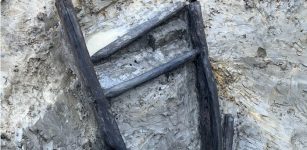 Incredibly Well-Preserved 1,000-Year-Old Wooden Ladder Discovered In The UK
Archaeology | Apr 30, 2022
Incredibly Well-Preserved 1,000-Year-Old Wooden Ladder Discovered In The UK
Archaeology | Apr 30, 2022 -
 Puzzling Ancient Artifacts Found In Canadian Mountains Defy Explanation – Scientists Say
Featured Stories | Aug 27, 2024
Puzzling Ancient Artifacts Found In Canadian Mountains Defy Explanation – Scientists Say
Featured Stories | Aug 27, 2024 -
 Does Palenque Mask Depict Mayan Ruler Pakal? New Discovery At Palenque
Archaeology | Aug 27, 2018
Does Palenque Mask Depict Mayan Ruler Pakal? New Discovery At Palenque
Archaeology | Aug 27, 2018 -
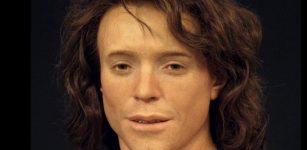 Reconstructed Face Of A Young Man Who Lived Some 1,300 Years Ago
Archaeology | Jun 11, 2019
Reconstructed Face Of A Young Man Who Lived Some 1,300 Years Ago
Archaeology | Jun 11, 2019 -
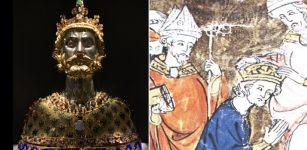 Mystery Of The Controversial Phantom Time Hypothesis
Featured Stories | Mar 21, 2019
Mystery Of The Controversial Phantom Time Hypothesis
Featured Stories | Mar 21, 2019 -
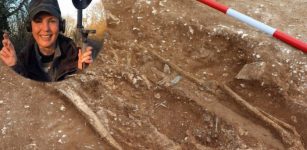 Anglo-Saxon Warlord’s Grave: Archaeologists And Metal-Detectorists Work Together
Archaeology | Oct 7, 2020
Anglo-Saxon Warlord’s Grave: Archaeologists And Metal-Detectorists Work Together
Archaeology | Oct 7, 2020 -
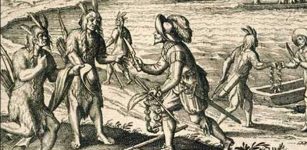 Indigenous People In Oconee Valley Remained In Southeastern US For Nearly 150 Years
Archaeology | Jul 15, 2020
Indigenous People In Oconee Valley Remained In Southeastern US For Nearly 150 Years
Archaeology | Jul 15, 2020 -
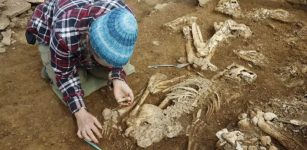 Riddle Of Orkney’s Lost Tomb – Fascinating Neolithic Discovery
Featured Stories | Nov 15, 2023
Riddle Of Orkney’s Lost Tomb – Fascinating Neolithic Discovery
Featured Stories | Nov 15, 2023 -
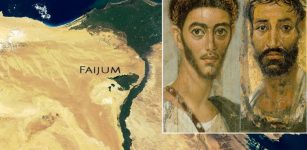 Faiyum Mummies: Long Lost Secrets Of A Mummy’s Portrait
News | Nov 24, 2020
Faiyum Mummies: Long Lost Secrets Of A Mummy’s Portrait
News | Nov 24, 2020 -
 Legend Of Kitezh – Ancient Underwater City And Its Doomsday Prophecy
Featured Stories | Mar 14, 2017
Legend Of Kitezh – Ancient Underwater City And Its Doomsday Prophecy
Featured Stories | Mar 14, 2017 -
 Vatican Secrets – Dangerous Knowledge And Invention That Could Alter History
Ancient Mysteries | Dec 14, 2018
Vatican Secrets – Dangerous Knowledge And Invention That Could Alter History
Ancient Mysteries | Dec 14, 2018 -
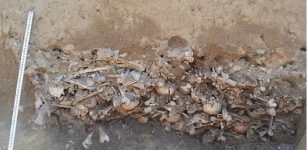 19th Century Mass Grave With Hundreds Decapitated “Vampires” Discovered In Polish Village
Archaeology | Jun 23, 2023
19th Century Mass Grave With Hundreds Decapitated “Vampires” Discovered In Polish Village
Archaeology | Jun 23, 2023 -
 ‘Golden Man’ – Sak Warrior Covered With Thousands Of Pieces Of Gold – More Light On Gold Techniques Used In Kazakhstan
Archaeology | Jan 9, 2019
‘Golden Man’ – Sak Warrior Covered With Thousands Of Pieces Of Gold – More Light On Gold Techniques Used In Kazakhstan
Archaeology | Jan 9, 2019 -
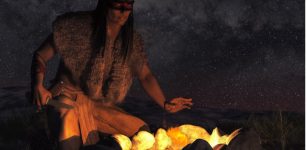 Rare 13,000-Year-Old Artifacts And Paleoindian Camp Uncovered in Connecticut Shed New Light On The First Ancient People In America
Archaeology | Mar 18, 2022
Rare 13,000-Year-Old Artifacts And Paleoindian Camp Uncovered in Connecticut Shed New Light On The First Ancient People In America
Archaeology | Mar 18, 2022 -
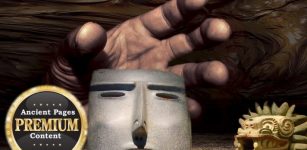 Untold Story Of Mexico’s Ancient Giant Indians – Secret Knowledge Of The Aztecs Revealed – Part 1
Ancient Mysteries | Sep 21, 2019
Untold Story Of Mexico’s Ancient Giant Indians – Secret Knowledge Of The Aztecs Revealed – Part 1
Ancient Mysteries | Sep 21, 2019 -
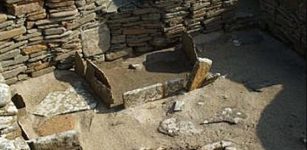 First Bathrooms Appeared Around 8,000 B.C In Scotland
Ancient History Facts | Dec 11, 2016
First Bathrooms Appeared Around 8,000 B.C In Scotland
Ancient History Facts | Dec 11, 2016 -
 Bulla Felix: Legendary Italian Leader Of Outlaws Who Robbed The Rich And Gave To The Poor
Featured Stories | Mar 23, 2023
Bulla Felix: Legendary Italian Leader Of Outlaws Who Robbed The Rich And Gave To The Poor
Featured Stories | Mar 23, 2023 -
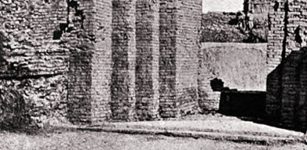 Sumerian City Of Girsu: Political, Religious Center With Large Archive Of Thousands Of Cuneiform Tablets
Civilizations | Jul 21, 2023
Sumerian City Of Girsu: Political, Religious Center With Large Archive Of Thousands Of Cuneiform Tablets
Civilizations | Jul 21, 2023 -
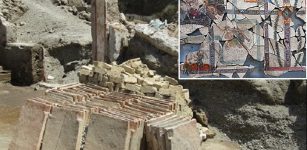 Pompeii Region IX: Roman Advanced Construction Techniques In New Light
Archaeology | Mar 27, 2024
Pompeii Region IX: Roman Advanced Construction Techniques In New Light
Archaeology | Mar 27, 2024 -
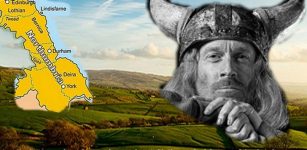 Famous Viking Warrior Eric “Bloodaxe” Haraldsson: King Of Norway
Featured Stories | Sep 29, 2016
Famous Viking Warrior Eric “Bloodaxe” Haraldsson: King Of Norway
Featured Stories | Sep 29, 2016

